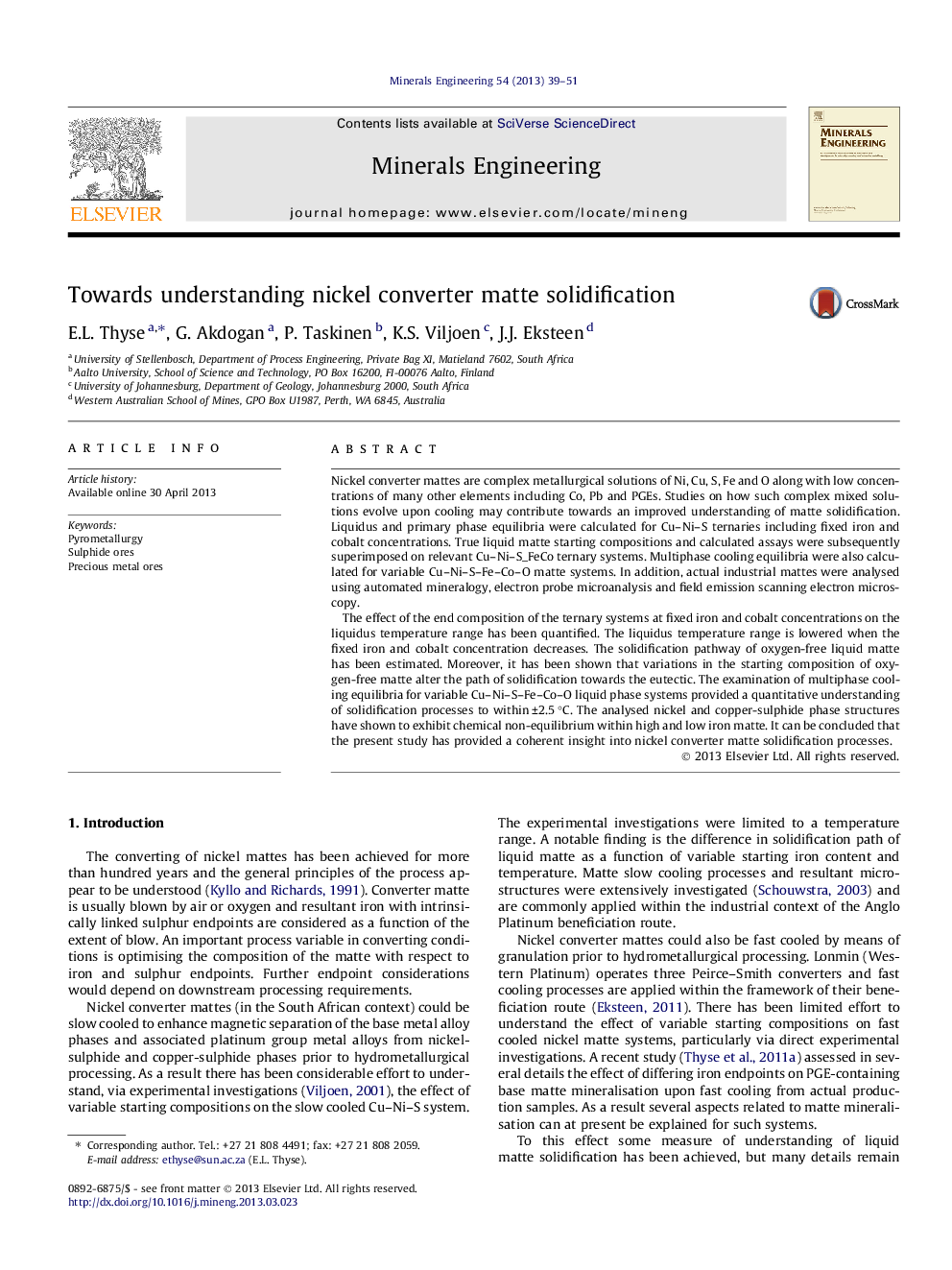| Article ID | Journal | Published Year | Pages | File Type |
|---|---|---|---|---|
| 233356 | Minerals Engineering | 2013 | 13 Pages |
•Ternary and liquid phase equilibria were calculated for oxygen-free liquid matte systems using MTDATA phase diagram software.•Multiphase equilibria were calculated for oxygen-bearing liquid matte systems using MTDATA supported by Mtox database.•Actual cooling features for fast cooled industrial matte systems were observed by automated mineralogy.
Nickel converter mattes are complex metallurgical solutions of Ni, Cu, S, Fe and O along with low concentrations of many other elements including Co, Pb and PGEs. Studies on how such complex mixed solutions evolve upon cooling may contribute towards an improved understanding of matte solidification. Liquidus and primary phase equilibria were calculated for Cu–Ni–S ternaries including fixed iron and cobalt concentrations. True liquid matte starting compositions and calculated assays were subsequently superimposed on relevant Cu–Ni–S_FeCo ternary systems. Multiphase cooling equilibria were also calculated for variable Cu–Ni–S–Fe–Co–O matte systems. In addition, actual industrial mattes were analysed using automated mineralogy, electron probe microanalysis and field emission scanning electron microscopy.The effect of the end composition of the ternary systems at fixed iron and cobalt concentrations on the liquidus temperature range has been quantified. The liquidus temperature range is lowered when the fixed iron and cobalt concentration decreases. The solidification pathway of oxygen-free liquid matte has been estimated. Moreover, it has been shown that variations in the starting composition of oxygen-free matte alter the path of solidification towards the eutectic. The examination of multiphase cooling equilibria for variable Cu–Ni–S–Fe–Co–O liquid phase systems provided a quantitative understanding of solidification processes to within ±2.5 °C. The analysed nickel and copper-sulphide phase structures have shown to exhibit chemical non-equilibrium within high and low iron matte. It can be concluded that the present study has provided a coherent insight into nickel converter matte solidification processes.
